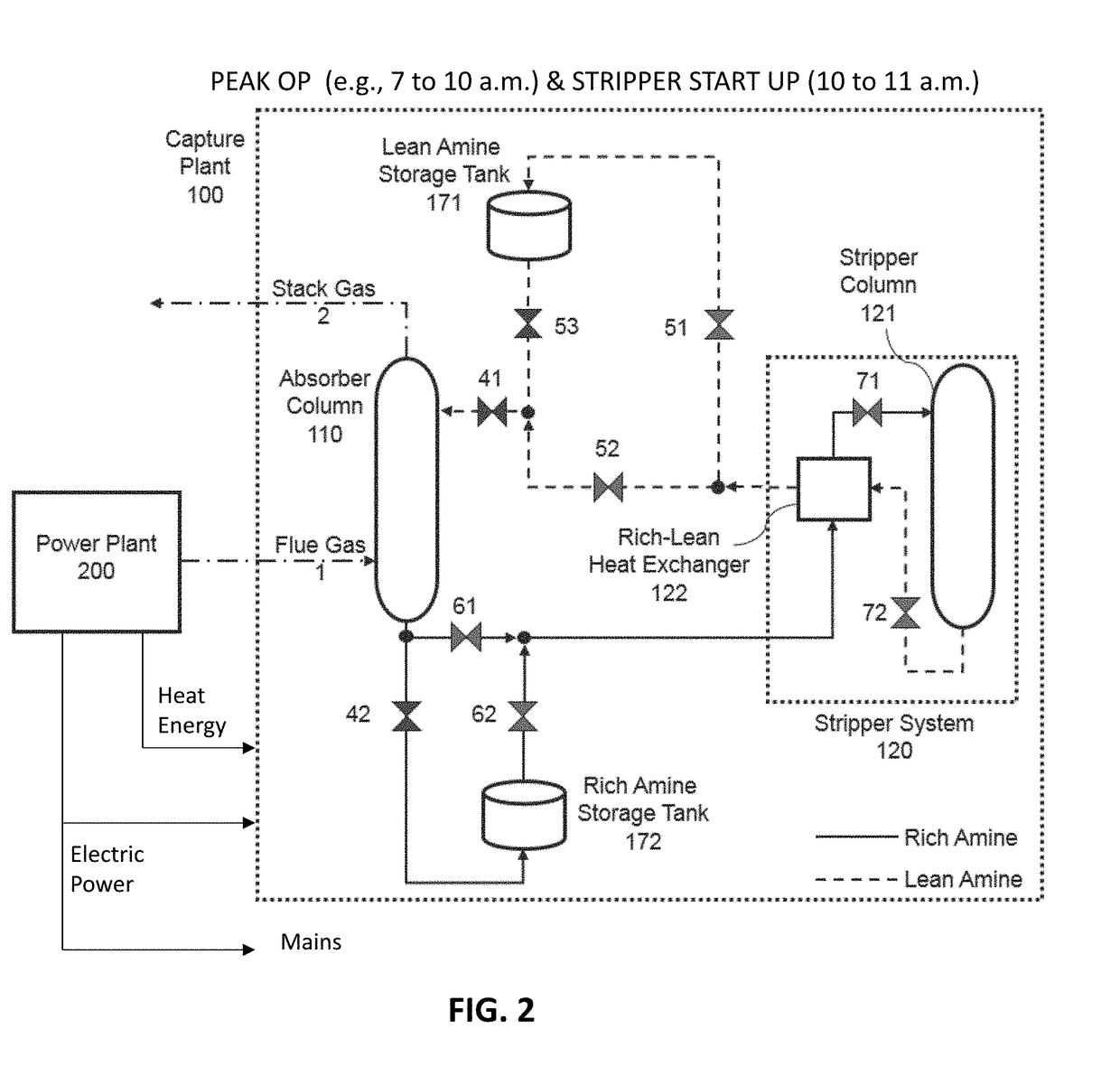System for time-shifting post-combustion co2 capture
- Summary
- Abstract
- Description
- Claims
- Application Information
AI Technical Summary
Benefits of technology
Problems solved by technology
Method used
Image
Examples
Embodiment Construction
[0018]In FIG. 1, a solvent-based CO2 capture system 100 to which the present invention is advantageously applied, has a generally conventional configuration but is operated according to the invention in a manner that alters operational parameters between peak and off-peak as well as transitional (e.g., startup) conditions.
[0019]A hot flue gas stream 1 from the stack of the power plant burning a fossil fuel (not specifically shown) goes first to a quench tower 131. Quench tower 131 includes a direct-contact heat exchanger utilizing water to cool the flue gas. The circulating water that contacts the flue gas stream 1 is cooled and filtered, which can constitute a means for removing particulates that may be present in the flue gas stream. After leaving the quench tower, a cooled flue gas stream 2 is passed into a booster fan (blower) 132 to maintain the required pressure in the inlet flue gas ducts.
[0020]On exiting the blower 132, the flue gas stream 3 enters an absorber 110, for examp...
PUM
| Property | Measurement | Unit |
|---|---|---|
| Time | aaaaa | aaaaa |
| Power | aaaaa | aaaaa |
| Flow rate | aaaaa | aaaaa |
Abstract
Description
Claims
Application Information
 Login to View More
Login to View More - R&D
- Intellectual Property
- Life Sciences
- Materials
- Tech Scout
- Unparalleled Data Quality
- Higher Quality Content
- 60% Fewer Hallucinations
Browse by: Latest US Patents, China's latest patents, Technical Efficacy Thesaurus, Application Domain, Technology Topic, Popular Technical Reports.
© 2025 PatSnap. All rights reserved.Legal|Privacy policy|Modern Slavery Act Transparency Statement|Sitemap|About US| Contact US: help@patsnap.com


